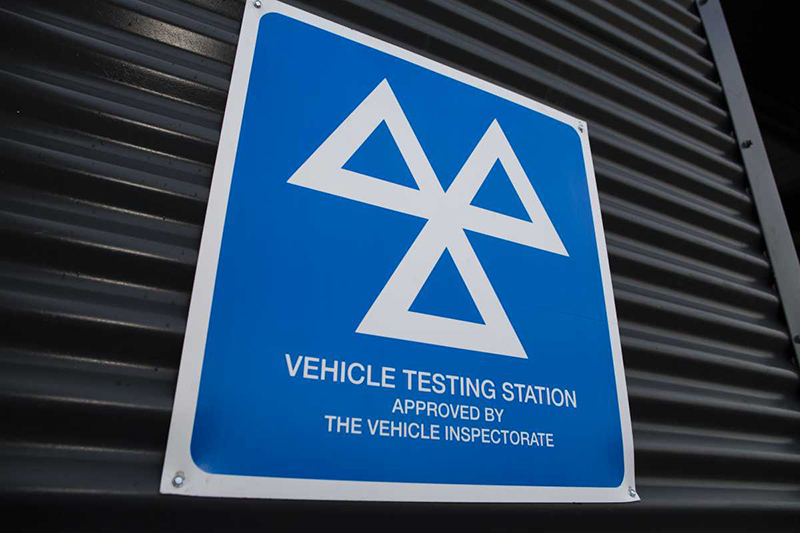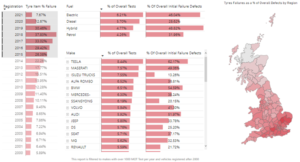
New IMI/Garage Industry Trends analysis shows tyres are the ‘weakest link’ in vehicle condition – with EV tyres experiencing more wear than those for ICE vehicles.
The Institute of the Motor Industry (IMI) has conducted in-depth analysis of MOT data in order to formulate a considered and balanced response to the Department for Transport’s MOT Consultation. Working with Garage Industry Trends to examine root causes in current patterns of MOT failure, the IMI analysis provides clear evidence that extending the date for the first MOT will significantly increase road user risk.
In particular the risks surrounding electric vehicles. EVs are heavier than ICE vehicles and cause heavier wear to their tyres which will be heightened if the first MOT date is extended. Evidence drawn from MOT testing records supplied to the IMI by the Department for Transport shows that comparative to petrol engine vehicles, electric vehicles are much more likely to fail their first MOT test.
EV failure rates for 2018 registered vehicles (all classes) was 11.51 per cent. This is lower than diesel (15.98 per cent) but higher than petrol (10.89 per cent). This pattern holds for 2017 and 2016 registration years. Given that a large proportion of EV owners in 2018 can be classed as enthusiast early adopters) and would likely maintain their car better than today’s average EV driver, the IMI believes this is a significant finding.
The data also indicates that EVs fail more on dangerous items than petrol vehicles — primarily being tyres. The data from the Department for Transport shows that looking at the class 4 car parc from 2015 — which would have had their first MOT in 2018 — electric vehicles are 1.95 per cent more likely to fail an MOT test on tyres than petrol vehicles. This is a relative difference of 46 per cent, with Tesla having the highest likelihood of any car make to fail on tyres. 46 per cent of all failure items for electric vehicles are related to tyres, compared to 32 per cent for petrol vehicles.
“This is not about the quality of tyres on cars”, explained Hayley Pells, Policy Manager at the IMI. “It is all about the lack of awareness amongst the general driving public about the importance of routine checking of vehicle condition and tyres in particular.
“Many motorists are likely to believe that they can wait for their first MOT to pick up any issues with tyres. However, the data shows that electric vehicles tend to fail on their tyres more than traditional petrol vehicles. If the first MOT is extended this will be a serious concern for road safety as well as potentially having a significant impact on consumer confidence in electric vehicles, which is unfair as the technology appears to perform well in other areas of current MOT testing.
“With the majority of first MOT tests taking place coupled with routine maintenance it is shocking that these figures exist for failure rates at all, suggesting that many of these vehicles have not been subject to routine maintenance that would pick these items prior to MOT test” continued Hayley Pells. “The IMI’s response to the MOT Consultation will therefore strongly advise that increasing the time before a periodic inspection of cars is detrimental for road safety. It reduces the frequency of maintenance and inspections that are critical to ensuring that vehicles are in good condition and performing at their best.”

Figure 1 Tyre analysis for MOT test data compared by powertrain (Garage Industry Trends).
“Clearly the road safety risk has to be the first point of focus for the MOT Consultation”, concluded Hayley Pells. “However, the IMI firmly believes there will also be a significant impact on the ability of the automotive aftermarket to be properly skilled for the growing electric vehicle parc if the date of the first MOT was extended. Reduced income despite the DVSA expecting MOT testing centres to invest in new equipment and professional training could see reduced choice for the motorist. Plus, the increased need for greater services from the DVSA to the MOT test centres for the new electric powertrain, despite a shortfall of income from motorists to run the service if the date for the first MOT is extended, could have the unintended consequence of requiring an unaccounted sum of public money.”









